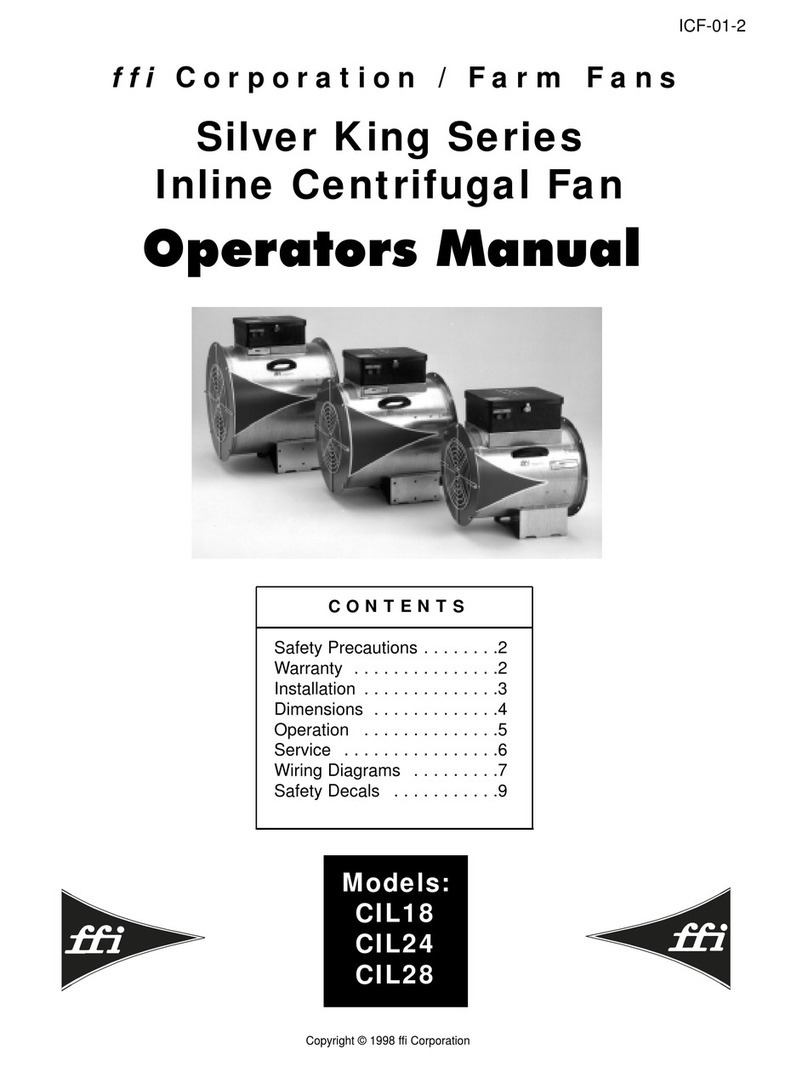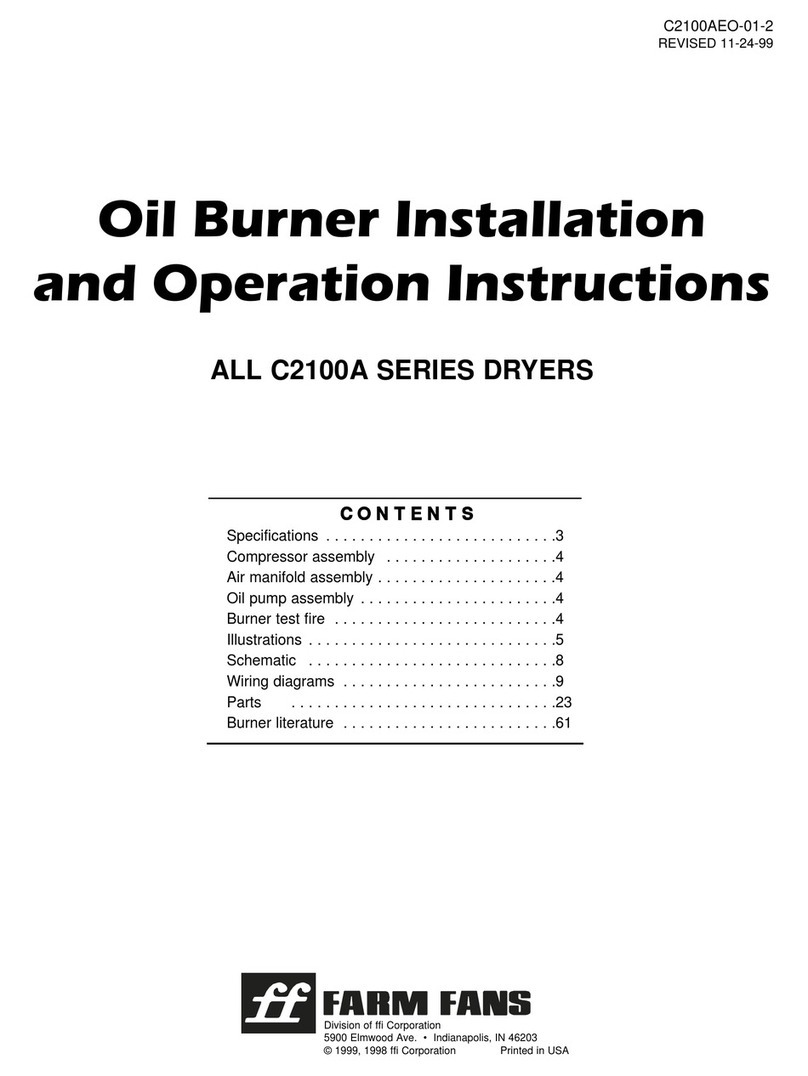7
TRANSPORTING DRYER
An optional Transport Kit is available for transporting the
unit by truck or tractor. Make certain to observe the fol-
lowing safety precautions:
1. Recommended towing hitch height: 16 to 17 inches.
2. Hitch pin to be not less than 3/4 inch in dia. and secure-
ly fastened so it will not come out in travel.
3. Use a safety chain.
4. Dryer must be towed empty and in accordance with
applicable state or provincial regulations.
5. Recommended tire pressure 55-60 psi (cold).
6. Maximum towing speed: 45 mph
7. After first 50 miles and every 200 miles thereafter:
a. Check temperature of transport wheels' hubs and
spindles immediately after stopping. Temperature
should not exceed 150°F. May be hot to touch, but not
melting lubricant.
b. Check wheel lug bolts; they are factory torqued at
115 to 120 ft lbs. Retighten, if required, to approxi-
mately 90 ft/lbs.
INSTALLATION
SYSTEM LAYOUT
Consider the grain handling system and location of
storage bins and existing conveyors when selecting
dryer site, to facilitate wet grain supply and dry grain
discharge to conveyors. Other considerations are pre-
vailing wind direction, fuel and power supply locations,
noise, and convenience of control location.
SITE SELECTION
The dryer should not be operated inside a building or in
any area not permitted by electrical code, fuel installa-
tion regulations, or insurance requirements. Do not
operate in an area where combustible material can be
drawn into the fans. Maintain a minimum distance of
three feet to other structures. Refer to dryer specifica-
tions and dimensions in Section 1.
FOUNDATION
The dryer should be placed on an 8" reinforced con-
crete slab located in a well-drained area. The slab
should be large enough to provide working area around
the dryer, with a surface elevation consistent with other
parts of the grain handling and storage systems. See
dryer specifications and dimensions in Section 1 for
suggested foundation size.
The dryer is supplied with a standard leg set to support
the dryer body at 24" high. (Optional 36" and 48" high
leg sets are available.) The dryer must be anchored to
the foundation with tie-down cables or by placing
anchor bolts through the leg supports into the founda-
tion. See C-2100B FIELD ASSEMBLY INSTRUC-
TIONS, Bulletin C21BIN-01-2, for leg installation
details.
Before proceeding with the installation, at this point it is
recommended that the dryer assembly be completed
according to C-2100B FIELD ASSEMBLY INSTRUC-
TIONS, Bulletin C21BIN-01-2, which provides essential
instructions for leg assembly, coupling the body and
fan-heater modules, assembling the fan-heater enclo-
sure, and installing fuel plumbing, electrical conduits
and the heat reclaimer option.
FUEL CONNECTION
LIQUID PROPANE (LP) DRYERS WITH INTERNAL
VAPORIZERS
LIQUID DRAW - The dryer is designed to operate on
liquid propane, with liquid draw from the supply tank.
A piping system is provided on the dryer, including
strainer, pressure relief valve, and manual shut-off
valve; a pressure regulator is provided on the fan-
heater unit, between the vaporizer and burner.
AMMONIA TANKS - Do not use propane supply tanks
which have previously contained ammonia or fertilizer
solutions. These substances are extremely corrosive
and damaging to fuel supply and burner parts.
OIL OR WATER IN TANKS - With liquid draw from the
supply tank, any water present in the tank may freeze
in the piping and controls in cold weather. To ensure
that tanks are free of moisture, the usual precaution is
to purge with methanol. Avoid tanks which may con-
tain an accumulation of oil or heavy hydrocarbons from
long use on a vapor withdrawal system.
NATURAL GAS (NG)
GAS VOLUME AND PRESSURE - The dryer is
designed to operate on natural gas having a heat value
of about 1,000 BTU per cubic foot. The dryer is
equipped with a natural gas supply pipe system con-
nected to the heater solenoid valves. A regulated pres-
sure of 8 to 10 PSI must be provided at the connection
to the dryer, with gas available in sufficient volume to
maintain operating pressure.






























